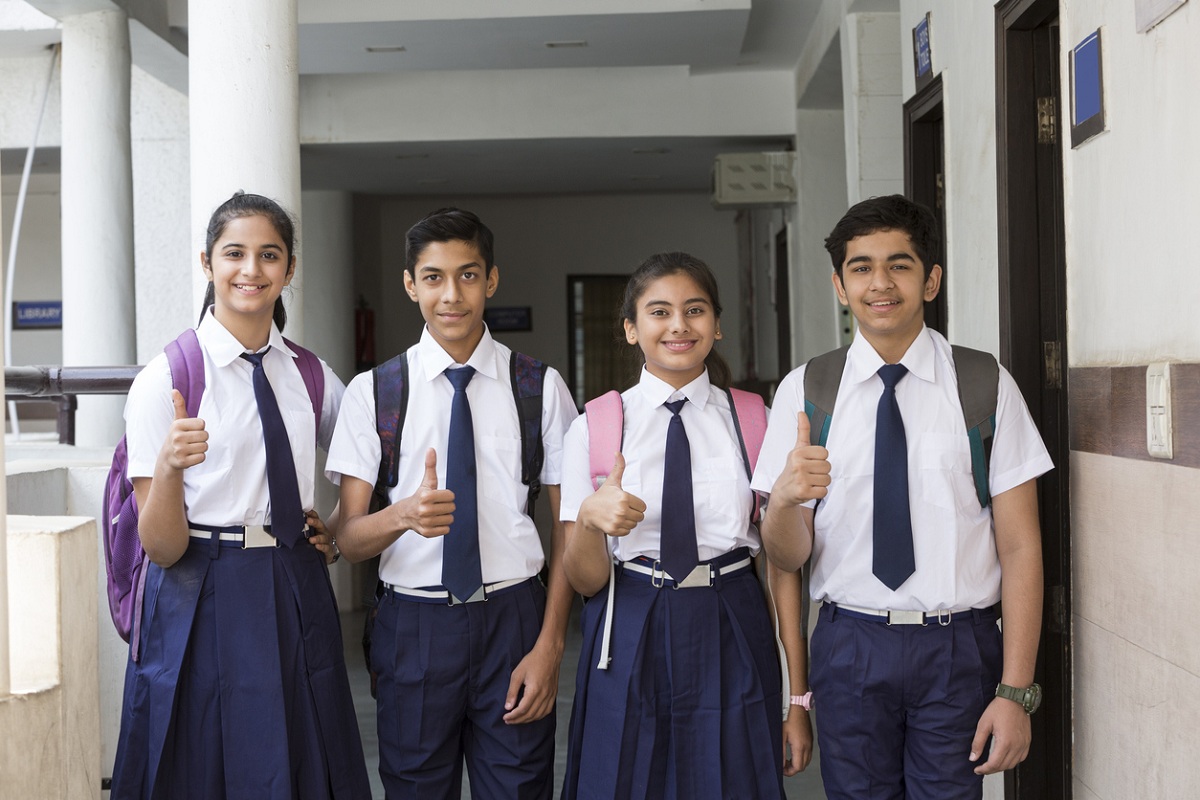Salkhan Fossils Park to be listed in UNESCO’s world natural heritage: UP min
The Uttar Pradesh government on Friday announced the inclusion of Salkhan Fossil Park in Sonbhadra district of the state in UNESCO's world natural heritage list.
The Covid-19 outbreak reversed decadal gains in driving access to education for all.
SNS | New Delhi | November 13, 2021 9:56 pm

Education improves is an enabler that pushes people up the social elevator. It has the power to pull people out of multi-generational poverty. India has been successful to a great degree in providing education for all. We must now focus on providing quality education to all. Access to quality education for pupils from marginalized sections of the society remains a challenge.
The Covid-19 outbreak reversed decadal gains in driving access to education for all. According to UNESCO’s 2020 report, the pandemic pushed 463 million students out of formal education. Three out of four of these students were from rural areas. Unsurprisingly, the percentage of school dropouts has been higher in developing countries. COVID-19 threatens to undo two decades of progress in girls’ education worldwide.
Advertisement
Around a quarter of India’s population is in the school and college-going age. This necessitates provision of quality education for everyone so the country can reap the demographic dividend. There are several issues that the Indian education system is grappled with. We cannot deny the fact that Indian government and institutions have been working to reform education.
Advertisement
In fact, the Indian government has implemented the New Education Policy, 2020 which prioritizes provision of technical support at the national and state level in the various areas related to learning assessment and reporting, foundational learning, life skills and career guidance.
We can achieve access to quality education by improving infrastructure, introducing conceptual learning by students, focusing on evaluation, better training for teachers, embracing technological tools.
India has adopted Quality Education for all by 2030 as a mantra for sustainable development. For Making India’s youth future-ready to attain this vision. The goals focus on achieving access, equity, and quality in education across early childhood education for all by 2030. This task requires a close partnership between all stakeholders including government, policymakers, academia, industry, and NGO’s to ensure inclusive and equitable education and promote lifelong learning opportunities for all.
Now India is looking at delivering education programs differently, that accelerate impact and achieve scale across interventions targeted at children. Governments and NGOs both have invested in large scale learning assessments and programs, for improving the delivery of education rather than letting it remain a simple data collection exercise.
In their quest to drive access to quality education, governments will find willing partners in the country’s non-governmental organizations. Civil society organizations have experience and expertise in working on the ground which can be vital in helping us reach our goals faster. I would like to cite two examples to prove my point.
The first example is that of Smile Foundation, a national level NGO which runs the Shiksha Na Ruke campaign. Under this program, around 50,000 students have been enrolled across the Smile Foundation’s 201 Mission Education centers in 22 states of the country, where they get educated by quality trainers.
The initiative targets reaching out to another 50,000 children living in difficult circumstances across the country by enabling access to education through the blended learning approach – a mix of classroom learning, learning through radio, TV programs, smartphone applications and through trainers who reach out in-person to students to educate them.
The second example is that of People Powered Digital Narratives, which, is a collaborative effort to help adolescents learn about issues including Girl Capital (Education and Employability), Air Quality, Adolescent Reproductive and Sexual Health and Rights and express their opinion using innovative storytelling and social media. PPDN is creating online spaces that will help adolescents develop into active citizens.
The aim is to equip them to talk about and influence the issues that affect them, making a positive difference in and beyond their communities. It is currently active in the peri-urban and rural areas of Uttar Pradesh, Rajasthan, Maharashtra, and Jharkhand. Her Akshar, Hawa Ke Rakshak and Ankaheen Baatein are online communities under this initiative, which is supported by Praxis UK and its partners.
Civil society organizations are ready and willing partners in the quest for administering quality education.
The ‘new normal’ may also have a huge impact on the learning levels for almost all children; learning loss may be a reality for many children. The future of millions of Indian children lies in our ability to impart high quality education.
This is, by far, the single most important factor that will help us in increasing the opportunities and lower theinequality gap. It is also an opportunity of a lifetime for all stakeholders – governments, corporates, and civil society organizations to converge and devise targeted interventions in education which transform the way students learn.
(By Dr Aatish Parashar, Dean and Head, Central University of South Bihar)
Advertisement
The Uttar Pradesh government on Friday announced the inclusion of Salkhan Fossil Park in Sonbhadra district of the state in UNESCO's world natural heritage list.
In the second calendar year of the third millennium of our Common Era, that is in 2001, our world witnessed two acts of destruction which have, since then, set the trajectory of global politics, foreign affairs, security and defense, and the continuing struggle for human rights.
The event, organised by UNESCO in collaboration with Springer Nature, featured panelists working across each of these interconnected sectors.
Advertisement
